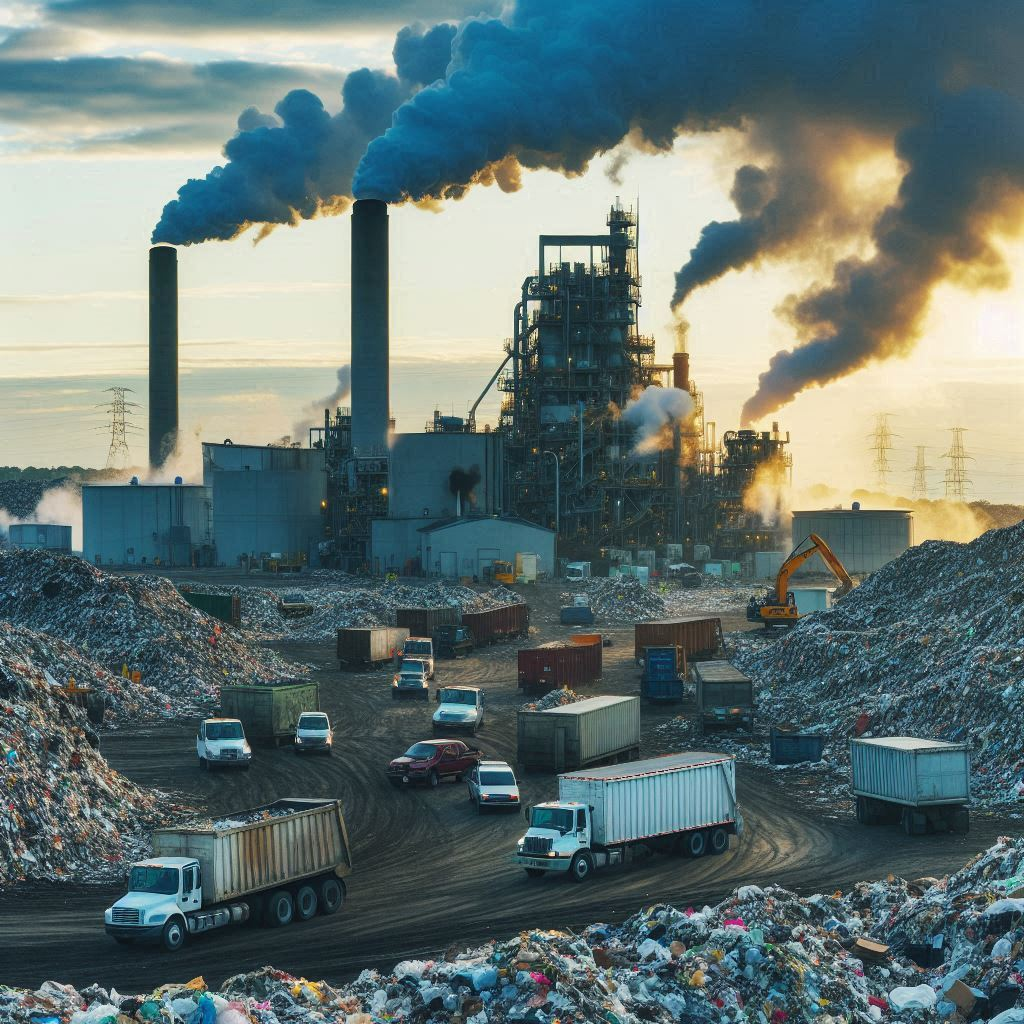Methane emissions at U.S. landfills exceed federal limits, surpassing reported levels, reveals recent inspection analysis.
Methane emissions at nearly two dozen U.S. landfills regularly exceeded federal limits, with some levels higher than what facility owners reported to the government, according to a recent analysis of inspection reports published on Thursday.
The study by environmental nonprofit Industrious Labs highlights significant gaps in the U.S. Environmental Protection Agency’s (EPA) regulations intended to prevent excessive emissions of the climate-warming gas methane from landfills.
The report suggests that current EPA regulations are insufficient, allowing landfills to emit large amounts of methane. The organization urges the EPA to adopt more stringent measures, including the use of advanced monitoring technologies, expanding regulations to cover smaller landfills, and mandating quicker installation of gas-capturing systems as landfills expand.
Importance of Methane Emissions
Methane is a potent greenhouse gas, significantly more effective at trapping heat in the atmosphere than carbon dioxide over the short term. This characteristic makes it a critical target for climate change mitigation efforts. Landfills are a major source of methane emissions, accounting for more than 14% of the U.S.’s total methane emissions in 2022, making them the third-largest source behind the oil and gas industry and livestock sector.
Industrious Labs’ findings underline the urgent need for updated and more rigorous landfill regulations. Katherine Blauvelt, circular economy director at Industrious Labs, emphasized the growing body of evidence supporting the need for the EPA to act. “More and more evidence is piling up that it’s time for the EPA to act and begin that process of updating the rule,” Blauvelt stated in an interview.
Recommendations for the EPA
To effectively curb methane emissions from landfills, Industrious Labs has made several recommendations. These include:
Advanced Monitoring Technologies:
The EPA should mandate the use of more sophisticated technologies to monitor methane emissions. These technologies can provide more accurate and timely data, helping to identify and address emissions more effectively.
Regulation of Smaller Landfills:
Current regulations often exempt smaller landfills, which can still contribute significantly to methane emissions. Extending regulatory requirements to these smaller sites could reduce overall emissions.
Speedier Installation of Gas-Capturing Systems:
As landfills expand, it is crucial to install gas-capturing systems promptly. These systems can significantly reduce methane emissions by capturing the gas and converting it into usable energy.
The EPA is slated to begin a reassessment of its landfill regulations by August this year. This comes as part of a broader effort by the Biden administration to address methane emissions across various sectors. In recent years, the administration has implemented several policies targeting methane emissions from the oil and gas industry and has led global initiatives to reduce methane emissions.
In 2021, the Biden administration played a pivotal role in launching the Global Methane Pledge, an international effort to cut methane emissions by 30% by 2030. Domestically, the EPA has identified food waste as a significant source of landfill methane emissions, attributing about 58% of fugitive methane emissions from landfills to decomposing food waste. The agency recommends diverting food waste from landfills to reduce these emissions.
Conclusion
The findings from Industrious Labs highlight a critical gap in the regulation of methane emissions from U.S. landfills. As the EPA prepares to reassess its landfill regulations, the recommendations from this report could play a pivotal role in shaping more effective policies. By adopting advanced monitoring technologies, extending regulations to smaller landfills, and ensuring faster implementation of gas-capturing systems, the U.S. can make significant strides in reducing methane emissions and combating climate change.
